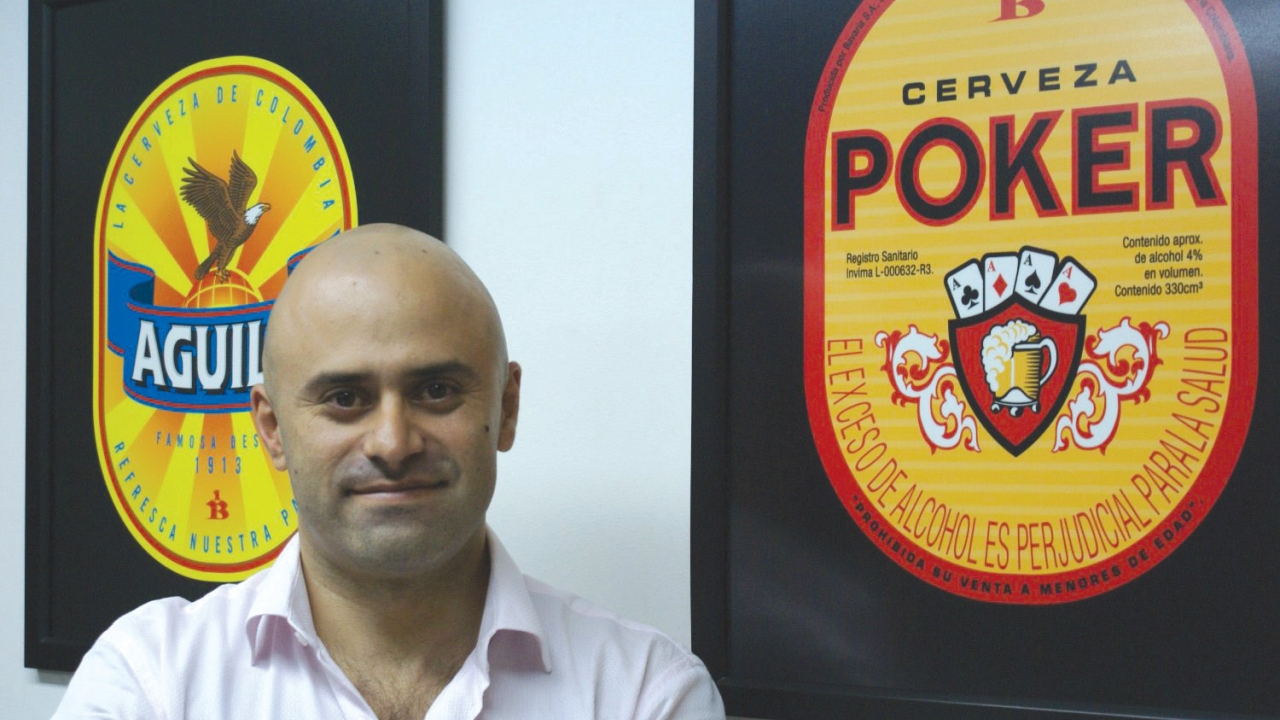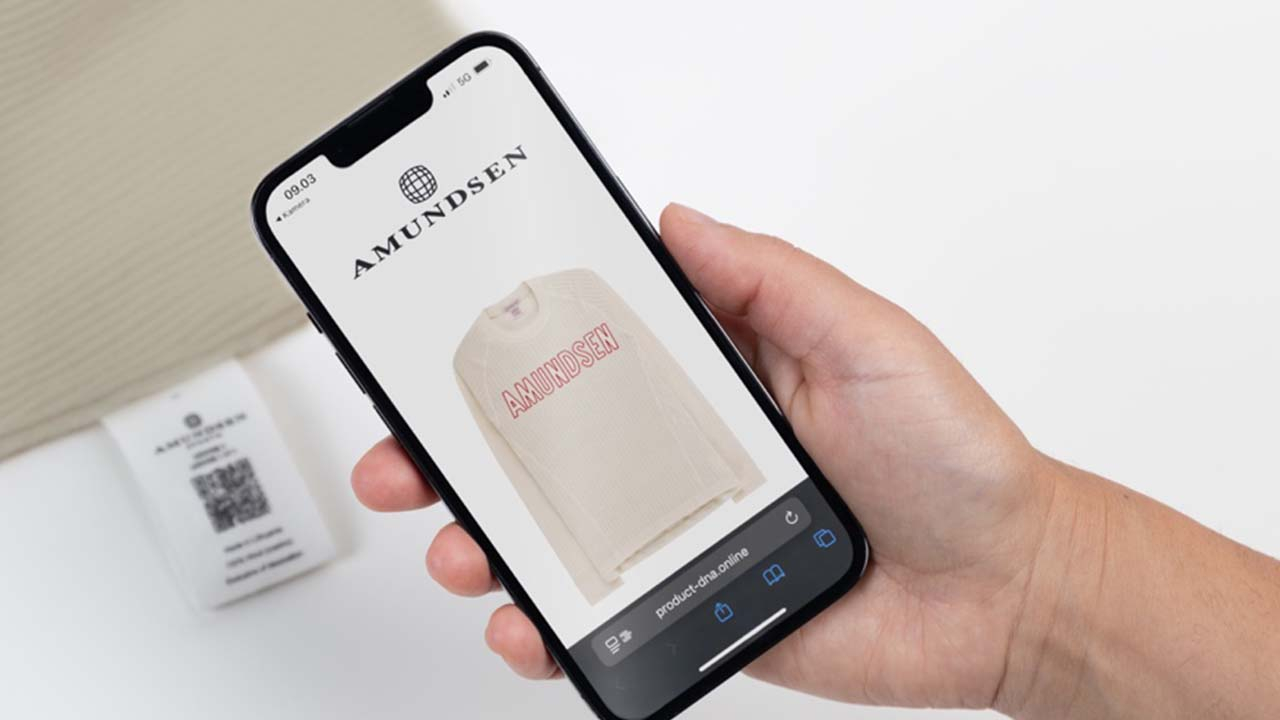Culture shift in Colombia

Recent investment and a culture shift brought on by new ownership has helped Impresora del Sur, SABMiller’s dedicated label converting operation, achieve remarkable levels of productivity. James Quirk reports
In 2005 SABMiller acquired Colombia-based Grupo Bavaria, the second largest brewery in South America. The deal, at the time cited as the biggest merger in Colombian history, brought the multinational brewer a leading market share in Colombia, Ecuador, Peru and Panama. As a part of the transaction, SABMiller also inherited Impresora del Sur, a label printing operation based in Santiago de Cali in the west of the country, which had been acquired by Grupo Bavaria in 1985.
Since the acquisition, SABMiller has streamlined operations, rebranded existing products and launched new beer lines. Impresora del Sur has played an important role in these processes, with recent investment in finishing equipment and an increased focus on efficiency helping it produce 120 million square meters of labels a year on just three presses.
‘Strategically, the label printing operation is a very important part of the group because we give the face to the brands,’ says Camilo Perez, general director of Impresora del Sur.
From one label to three
In 2007, SABMiller undertook an ambitious rebranding of its products: premium beer Club Colombia; Poker, its most popular brand; as well as Aguila, Aguila Light, Pilsen and Costeña beers and a non-alcoholic soft drink called Pony.
It also launched two new lines: Redds, specifically aimed at women, and Barena.
The rebranding brought new levels of complexity to the products printed by Impresora del Sur, with standard rectangular labels being replaced by more irregular shapes and the introduction of varnishes and metalized paper for the premium brands. There was also a considerable increase in the total volume of labels being produced – where previously the beers had sported just one label, now there were to be three, on the front, back and neck of the bottle.
To facilitate this increase in production, extra shifts were introduced and new machine operators brought in. The company invested in new die-cutting and slitting equipment to cope with the extra production. That year, Impresora del Sur printed 11.432 million labels – a 41 percent increase on 2006.
‘SABMiller attaches great importance to the brand and to marketing,’ says Perez. ‘There has been a shift in culture. In Colombia, the consumer tends to tear the label off the bottle before drinking a beer, so there was not a great deal of importance attached to the label. But this has changed: we know that the label is the first thing that the consumer looks at. We now measure absolutely everything; the product must be perfect.’
Technology revamp
The labels are printed on sheet-fed offset presses from Heidelberg: two Speedmasters and a Speedmaster CD. The machines are of 4-, 5- and 6-colors plus varnish and have a web width of 70cm. Converting and finishing equipment includes five slitters from Polar, two Blumer die-cutters from Atlas, a Lombardi die-cutting machine and two from PMC. An embossing machine from Bobst was installed in 2008 and an Apollo sheeter from MarquipWardUnited, part of the Barry-Wehmiller group, was purchased in 2009. Platemaking takes place in-house.
‘We are in the middle of a technology revamp at the moment,’ says Perez. ‘First came investment in finishing equipment, and then converting machines. The printing equipment will also be upgraded in the near future, still with Heidelberg machines.’
Focus on productivity
The investment in finishing equipment and streamlining of processes allows Impresora del Sur to print a staggering 1,900 million labels a month, around 120 million square meters a year. Machines run for 24 hours a day, 365 days a year, with just eight hours of downtime a week for maintenance.
‘There has been a real focus on efficiency to reach the level of production that we do,’ says Perez. ‘Set-up and job changeover times have been reduced. Once, a director of worldwide service for Heidelberg came from Germany to visit the site. He could not believe the level of productivity we were achieving and had never before seen that level of speed.’
Crucial to these impressive levels of productivity is Impresora del Sur’s ability to focus purely on printing and converting. Of the company’s 156 employees, 130 are machine operators. While most label converting operations must also focus on marketing and accounts, for example, Impresora del Sur can count on SABMiller’s in-house teams.
‘It’s a great advantage that we can rely on SABMiller for these things,’ says Perez. ‘We are a part of SABMiller, but that is not to say we do not have to compete with other printers in the market. SABMiller pays close attention to printing costs each year and compares them to other companies. Costs are strictly managed – every year for the last five we have reduced the price of the labels we produce.’
Impresora del Sur was founded in 1974 and began label printing four years later. Its 5,400 square meter site is located in Santiago de Cali in the west of the country. Colombian law requires there to be open spaces between building and street in industrial zones, so 3,000 square meters of Impresora del Sur’s site is currently being used. But even allowing for this, there is room for expansion of around 10 percent, which Perez says will be used when the printing equipment is upgraded.
With a population of 2.2 million, Cali is the third largest city in Colombia. It is a strategic location, similar in distance to both the Ecuadorian and Panamanian borders and 300 kilometers from the county’s capital, Bogota.
According to Perez, export to Ecuador and Panama is a possibility in the future and is the subject of an internal study.
Consumer habits
When SABMiller acquired Grupo Bavaria in 2005, it inherited a 99 percent share of the Colombian beer market. The rebranding undertaken by the company has therefore not been aimed so much at increasing market share, but at changing the consumer habits in a country where per capita beer consumption is significantly lower than in other parts of the world. Colombians drink 42 liters of beer per person per year, compared to 124 liters in Argentina and 160 liters in Germany.
‘We are looking to change consumer habits,’ says Juan Diego Buenaventura, procurement director, CRC and packaging materials for SABMiller Latin America, based at the company’s regional headquarters in Bogota. ‘At the moment there is low beer consumption but with high intensity. We want to change the frequency of consumption, in a responsible way, of course, and have launched marketing campaigns directed at this.
‘We looked to change the image of our beer brands and worked with specialist design agencies to create new bottles and new labels. The label on the back of the bottle, for example, was completely new in the Colombian market and raises the whole aspect of the overall package.’
SABMiller has also introduced regular promotional campaigns for its seven main brands. Usually, just the back label will change; the front label remains consistent as a crucial part of the brand. Occasionally, during the soccer World Cup, for example, all the labels will change as part of the promotion.
The local preference for tearing off the label prior to consumption has led the company to explore the possibility of using the reverse side of the label for promotions. Testing has been undertaken with special varnishes.
In recent years, some of the world’s leading beer brands have moved from wet-glue to self-adhesive labels. In Colombia, however, Buenaventura says that the move would not be justified because of both financial and cultural reasons. ‘The trend towards self-adhesive labels is mainly found in premium brands. In developing markets, the costs are often not justified – it would be extremely expensive to change the processes in order to produce self-adhesive labels. Also, this mainly works if the bottle is not returnable. In Colombia, the vast majority of beer is consumed from returnable bottles.’
This culture of returnable bottles is prevalent throughout much of South America. In Colombia, some 95 percent of beer is consumed in local bars, cafes and restaurants. The bottles are returned, washed and reused, so must have materials and adhesives that can be removed easily.
SABMiller’s focus on lowering its costs has also lead to the reduction of its environmental impact. Rising material costs encouraged the company to reduce the base weight of the paper used in its labels, which also brings environmental benefits. ‘We are looking to reduce our environmental impact,’ says Roberto Garcia, packaging materials director. ‘As well as lowering the base weight of the paper, we have switched from Casein to synthetic glue, which has more stability and requires less consumption. We also work with water-based inks and have stopped using solvents. These initiatives have lowered costs and have had environmental benefits.’
Materials are imported, and SABMiller buys in bulk and supplies its printing operations directly in order to reduce costs. ‘All our labels are applied with glue and material that can withstand ice and water, which is a technical requirement from a consumption point of view,’ says Garcia. In a recent development, waste material is now reprocessed and can be reused in egg cartons and book covers.
SABMiller is made up of five companies in Colombia – three breweries, two malt houses and its printing operation, Impresora del Sur. The acquisition of Grupo Bavaria also brought plants in Panama, Ecuador and Peru, and the structure of the company, as well as the beer brands, remains local in each country.
Pictured: Camilo Perez, general director of Impresora del Sur
This article was published in L&L issue 1, 2011
Stay up to date
Subscribe to the free Label News newsletter and receive the latest content every week. We'll never share your email address.


